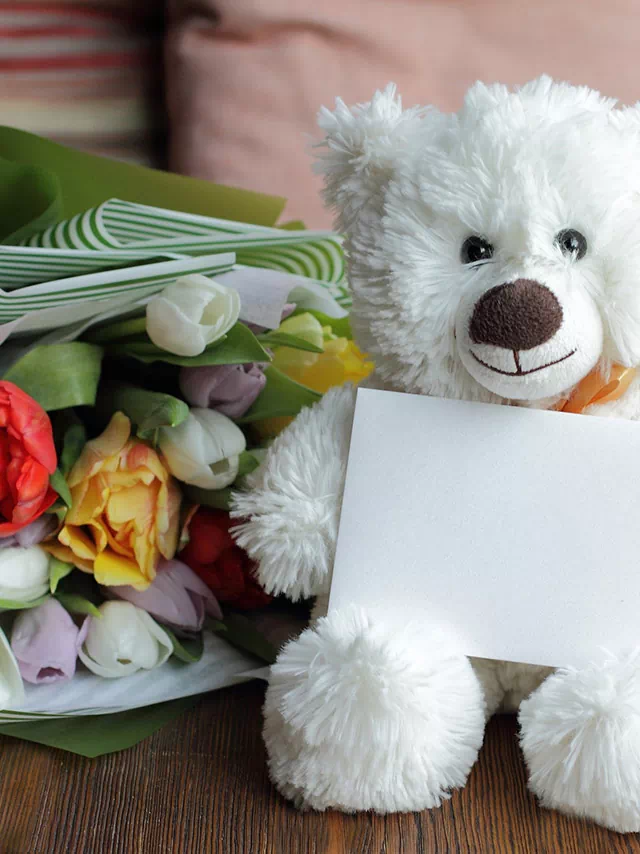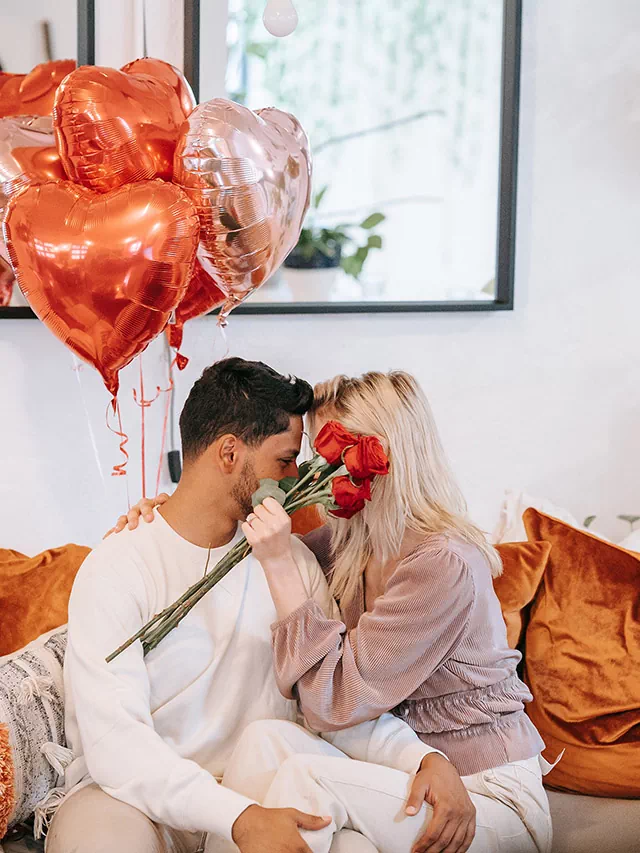Valentine’s Day is a day to celebrate love and affection between romantic partners. It’s a day to show your significant other just how much you care about them, and to create lasting memories that will strengthen your relationship. But with so many options and expectations, planning the perfect Valentine’s Day can feel overwhelming. Fear not, as we’ve compiled a comprehensive guide to help you plan a Valentine’s Day celebration that’s thoughtful, memorable, and tailored to your unique relationship. From creative date ideas and thoughtful gifts, to tips for expressing your love and keeping the romance alive all year long, our guide has everything you need to plan the perfect Valentine’s Day for you and your partner. So, read on and let’s make this Valentine’s Day a day to remember!
Start planning early
Starting your Valentine’s Day planning early will give you ample time to make all the necessary arrangements. You can take the time to research and compare different options for gifts, activities, and restaurants. It gives you the chance to adjust your plans if something doesn’t work out or if your partner has a preference that you weren’t aware of. Planning ahead also shows your partner that you put effort and thought into the day, making them feel special and loved.
Choose the right gift
Choosing the right gift for your partner can be tricky, but taking the time to think about their interests, preferences, and personality can help you pick the perfect gift. Think about what they would love to receive and what would make them feel special. This could be a piece of jewelry, a thoughtful handwritten note, or a gift that relates to a shared interest or inside joke between the two of you. If you’re struggling to come up with ideas, ask their friends or family for suggestions or check out online gift guides for inspiration.
Create a romantic atmosphere
Whether you’re staying in or going out, creating a romantic atmosphere can make all the difference in making your partner feel special and loved. Consider the lighting, music, and decor to create a warm and inviting ambiance. If you’re staying in, you can decorate the room with candles, fairy lights, or rose petals. If you’re going out, consider choosing a restaurant or venue with a romantic ambiance. The right atmosphere will set the mood for a memorable Valentine’s Day.
Plan a special activity
Valentine’s Day is an opportunity to spend quality time with your partner, and planning a special activity can make the day even more memorable. Consider activities that you both enjoy or have been wanting to try. This could be a couples massage, a cooking class, a concert, or a scenic hike. Choose an activity that allows you to connect and spend time together, creating new memories that you can cherish.
Surprise them
Adding an element of surprise to the day can make it even more special and memorable. Consider a surprise breakfast in bed, a surprise date night, or a surprise gift. Think about something that your partner wouldn’t expect but would appreciate. The element of surprise shows that you put thought and effort into the day and that you’re willing to go the extra mile to make them feel special.
Write a love letter
Taking the time to write a heartfelt love letter to your partner is a thoughtful and personal way to express your love and appreciation for them. Consider why you love them and what they mean to you. You can include memories of special moments you’ve shared or what you’re looking forward to in your future together. This love letter will be a treasured keepsake that they can cherish for years to come.
Don’t forget the small details
The small details can make all the difference in creating a memorable Valentine’s Day. Consider their favorite drink or dessert and incorporate it into your plans. You can also plan thoughtful gestures throughout the day, such as holding hands, kissing, or telling them how much you love and appreciate them. These small touches show that you’re attentive to their needs and that you care about making the day special for them.
Avoid distractions
On Valentine’s Day, it’s important to focus on your partner and the time you spend together. Avoid distractions such as checking your phone or watching TV. Instead, focus on listening to your partner, engaging in conversation, and being present in the moment. This will show your partner that you value and appreciate them, and that you’re fully invested in spending quality time with them.
Consider their love language
Everyone has a different love language, and understanding your partner’s love language can help you plan a Valentine’s Day that truly resonates with them. If your partner’s love language is words of affirmation, consider writing them a heartfelt note or telling them how much you love and appreciate them throughout the day. If their love language is acts of service, consider planning an activity that involves doing something thoughtful for them, such as cooking their favorite meal or organizing a surprise activity.
Be flexible
While it’s important to plan ahead, it’s also important to be flexible and open to changes. Be prepared to adjust your plans if something unexpected comes up or if your partner expresses a preference for a different activity or restaurant. Remember that the most important thing is spending quality time together and making your partner feel loved and appreciated.
Take care of logistics
Ensure that all logistics are taken care of before the day of the celebration. If you’re planning to go out, make sure to make reservations at the restaurant or venue of your choice, and consider transportation to and from the location. If you’re staying in, make sure to have all the necessary supplies, such as candles or decorations, ready beforehand. By taking care of logistics ahead of time, you can avoid last-minute stress and focus on enjoying the day with your partner.
Be mindful of your partner’s preferences
Remember that the perfect Valentine’s Day is not necessarily the same for everyone. Be mindful of your partner’s preferences and consider what they would truly enjoy. For example, if your partner isn’t a fan of big gestures, they may appreciate a more low-key celebration at home. By tailoring your plans to your partner’s preferences, you can ensure that they feel truly appreciated and loved.
Plan a surprise date night
Planning a surprise date night is a great way to make your partner feel special and loved. Consider arranging a fun activity, such as a wine and paint night, or booking tickets to a show or concert that you know your partner will enjoy. By surprising your partner with a special activity, you can create a unique and memorable Valentine’s Day celebration.
Cook a special meal
Cooking a special meal for your partner is a thoughtful and romantic gesture. Consider preparing their favorite dish or trying out a new recipe together. You can also decorate the table with candles and flowers to create a romantic atmosphere. Cooking together can be a fun and intimate activity that allows you to bond and create new memories.
Be present and engaged
The most important part of Valentine’s Day is spending quality time with your partner. Be present and engaged throughout the day, and make sure to give them your full attention. Avoid checking your phone or getting distracted by other things. By being fully present and engaged, you can show your partner that they are a priority and that you value the time you spend together.
Give thoughtful gifts
When it comes to giving gifts on Valentine’s Day, it’s not about the price tag, but rather the thought behind the gift. Consider giving your partner a thoughtful and meaningful gift that shows them how much you know and care about them. This could be a personalized photo album or a piece of jewelry that gift you choose, make sure that it reflects your partner’s interests and preferences. If you’re not sure what to get, consider asking their friends or family members for ideas.
Express your love
Valentine’s Day is the perfect opportunity to express your love and appreciation for your partner. Don’t be afraid to express your feelings through words or actions. You can write a love letter, make a heartfelt toast, or plan a surprise gesture that shows your partner how much they mean to you. Remember that expressing your love doesn’t have to be complicated or expensive – it’s the thought and effort that counts.
Take care of yourself
While it’s important to focus on your partner on Valentine’s Day, it’s also important to take care of yourself. Make sure to get enough rest, eat healthy foods, and take some time for self-care. By taking care of yourself, you’ll be in a better position to show up fully for your partner and enjoy the day together.
Create a playlist
Music can be a powerful tool for setting the mood and creating a romantic atmosphere. Consider creating a playlist of your partner’s favorite songs or songs that hold special meaning for the two of you. You can play the playlist in the background during your celebration or use it as a soundtrack for a special activity, such as dancing or cooking together.
Keep the romance alive
Valentine’s Day is just one day out of the year, but it’s important to keep the romance alive throughout the year. Make an effort to show your partner love and appreciation on a regular basis, whether it’s through small gestures or grand romantic gestures. By keeping the romance alive, you can strengthen your relationship and create a lifetime of happy memories.
Embrace spontaneity
While planning is important, sometimes the most memorable moments happen spontaneously. Embrace the opportunity to be spontaneous on Valentine’s Day and let the day unfold naturally. You never know what surprises or adventures may come your way.
Incorporate shared memories
Incorporating shared memories into your Valentine’s Day celebration can be a meaningful way to honor your relationship. Consider revisiting a place or activity that holds special meaning for the two of you, such as the location of your first date or a favorite hiking trail. By revisiting shared memories, you can reflect on how far you’ve come as a couple and create new memories in the process.
Get creative
Don’t be afraid to get creative with your Valentine’s Day celebration. Consider creating a scavenger hunt that leads your partner to different surprises throughout the day, or planning a DIY project that you can work on together. By getting creative, you can inject some fun and excitement into your celebration.
Show appreciation
Valentine’s Day is not only about expressing love, but also about showing appreciation. Take the time to acknowledge and appreciate all the ways that your partner supports and loves you. Consider writing a list of all the things you appreciate about your partner or planning a surprise that shows your gratitude.
Have fun
Above all, remember to have fun on Valentine’s Day. Don’t take things too seriously and allow yourself to be playful and lighthearted. Whether you’re going out on the town or staying in for a cozy night, focus on enjoying each other’s company and celebrating your love in a way that feels authentic and meaningful to both of you.
Take a break from technology
In today’s digital age, it’s easy to get distracted by phones and screens. Consider taking a break from technology on Valentine’s Day and focusing on being present with your partner. Turn off your phones or designate certain times for checking messages, and instead, focus on connecting with each other in the moment.
Practice gratitude
Gratitude is a powerful tool for cultivating happiness and strengthening relationships. Take some time on Valentine’s Day to reflect on all the things you’re grateful for in your relationship. Consider sharing your gratitude with your partner or writing a gratitude letter.
Make it a group celebration
Valentine’s Day doesn’t have to be just for couples – it can also be a fun opportunity to celebrate with friends or family members. Consider planning a group celebration, such as a dinner party or game night, that allows everyone to come together and share in the love.
Volunteer together
Giving back to others can be a meaningful way to celebrate Valentine’s Day. Consider volunteering together at a local charity or organization. Not only will you be making a positive impact, but you’ll also be strengthening your bond as a couple by working towards a shared goal.
Remember that love comes in many forms
Finally, remember that love comes in many forms. Whether you’re single, in a new relationship, or celebrating with a long-term partner, there are many ways to express and experience love. Focus on celebrating love in all its forms and finding joy in the connections you have with others.
Valentine’s Day may only come around once a year, but with the right planning and effort, you can make it a day to remember for a lifetime. By following our comprehensive guide, you’ll have all the tools and inspiration you need to plan the perfect Valentine’s Day celebration that’s tailored to your unique relationship. Whether you choose to spend the day exploring new activities, expressing your gratitude, or simply enjoying each other’s company, the most important thing is to focus on creating a memorable experience that celebrates your love and strengthens your bond. So, take our tips and make this Valentine’s Day a day to remember – and remember, the love and appreciation you show on this special day can be carried throughout the year to keep the romance alive and thriving.
















